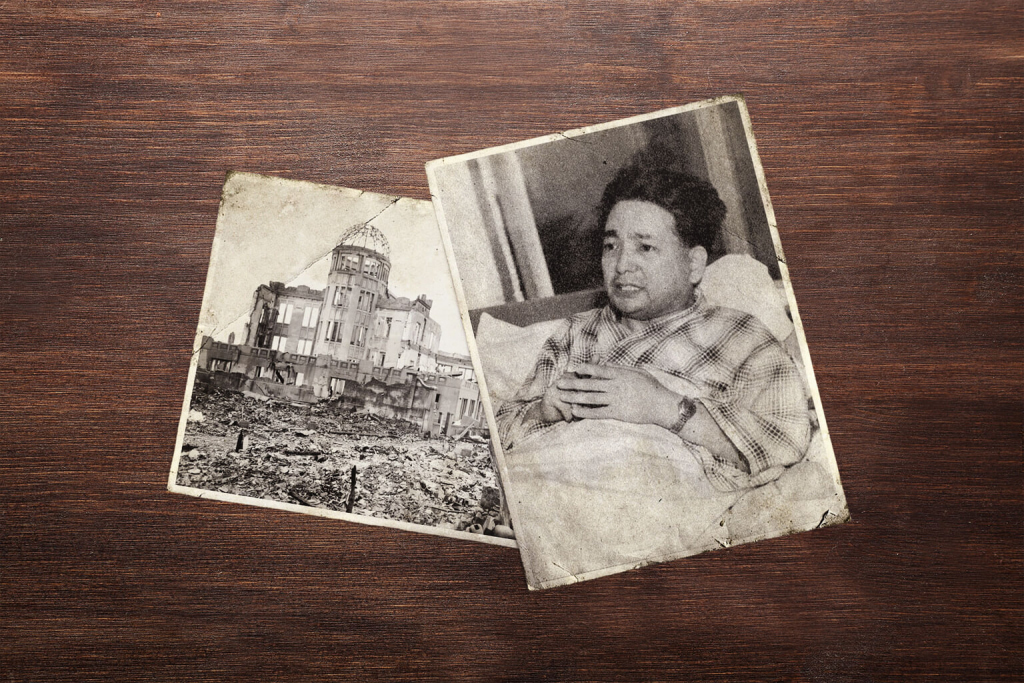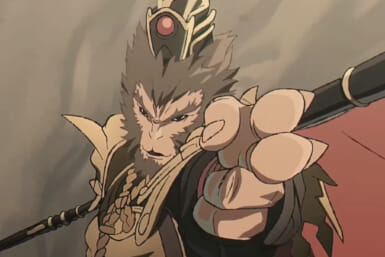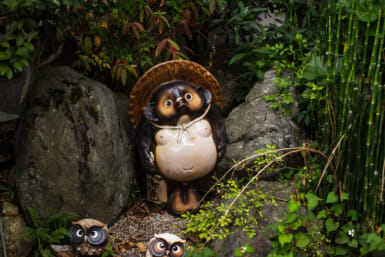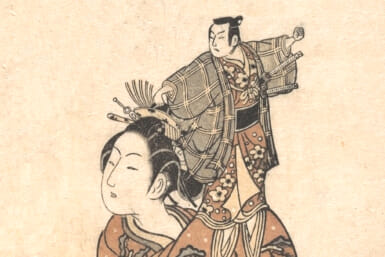In our latest Spotlight article we focus on Kiyoshi Tanimoto, who passed away on this day in 1986. An American-educated Methodist minister, he survived the atomic bombing of Hiroshima in 1945 and then spent much of his life dedicated to supporting A-Bomb victims. He was most well-known as one of the six central characters in “Hiroshima,” John Hersey’s powerful and groundbreaking article for The New Yorker that was later printed as a book.
The fame he garnered from Hersey’s story, plus his links to the US, made him the ideal person to help arrange for the so-called “Hiroshima Maidens,” (25 women disfigured in the blast) to get reconstructive surgery in America. This also led to him being invited as a guest on the NBC reality documentary series This Is Your Life, where he came face-to-face with Robert A. Lewis, co-pilot of the plane that dropped the bomb on the city where he was living. It was arguably one of the most awkward encounters in television history.
Background
Born in Sakaide City, Kagawa Prefecture on June 27, 1909, Tanimoto was the youngest of eight children. Brought up a Buddhist, he was introduced to Methodism by American missionary Bertha Starkey during a post-high school trip to Korea where he was visiting his older brother. Not long after his return to Japan, his mother died unexpectedly.
Her passing had a big effect on Tanimoto and was one of the reasons why he decided to become a Methodist minister. He went on to study Christianity at Kwansei Gakuin University in Nishinomiya. It was a move that his father fiercely opposed. In fact, he was so against it, he even struck his son’s name off the family register.
Hoping to work things out, Tanimoto invited his father to his graduation. The invitation was returned with a note saying, “I do not know this person.” Through his sister, Tanimoto eventually reconciled with his dad shortly before flying out to Atlanta, Georgia to enroll on an International Methodist Scholarship at the Candler School of Theology in 1937. Three years later, he was ordained as a minister, before going on to serve at churches in California and Okinawa.
Tanimoto married Chisa in 1942 and relocated to Hiroshima a year later, where he stayed for the remainder of World War II. It was a city that, for most of the conflict, had been left relatively unscathed. This, however, left Tanimoto feeling uneasy, like something big was about to happen. The regular air raid sirens didn’t help with his anxiety.
The Bombing
At around 8:15am on August 6, 1945, his worst fear was realized. A small object attached to two parachutes was dropped out of a B-29 bomber. At the time the reverend was helping a friend move furniture. The pair were in the garden when they noticed a bright flash of light in the sky. Despite hearing no sound, Tanimoto dove between two rocks. Fortunately, he wasn’t seriously injured.
Getting up, Tanimoto frantically ran out of the estate and immediately helped an old woman and an injured child. His city was on fire. “He had thought of his wife and baby, his church, his home, his parishioners, all of them down in that awful murk,” wrote Hersey in Hiroshima. “Once more he began to run in fear — toward the city.”
What Tanimoto witnessed along the way was horrific. There were people in agony with skin falling off, while many were vomiting as they walked. He felt guilty as he’d been left largely unscathed and couldn’t help everyone. After being reunited with his wife and child, the reverend then tried to support others in any way he could. He took out a boat to help injured people in and around the river, rescued those who were trapped and brought water to survivors.
Following Hersey’s seminal article in 1946, Tanimoto became known throughout the world. Two years after it was released, he was invited back to America where he went on a 15-month tour, giving speeches in 31 states. During his time there, he met prominent figures such as Nobel Prize-winning author Pearl S. Buck and political journalist Norman Cousins. These meetings led to the establishment of the Moral Adoption Program, in which American “adoptive parents” offered financial support and sent presents to A-bomb orphans.
This is Your Life
Cousins and Tanimoto continued to work together to support hibakusha in the 1950s, most notably the Hiroshima Maidens: a group of women disfigured by the thermal flash of the fission bomb. Tanimoto helped to raise funds for some of them to get treatment in Japan, but back then plastic surgery wasn’t as advanced here as it was in the US. So, on May 5, 1955, 25 of the Maidens were transported to America to undergo reconstructive surgeries.
While accompanying them on the trip, Tanimoto was invited on This Is Your Life, a program in which presenter Ralph Edwards surprised guests before taking them through a retrospective of their lives in front of a studio audience. Tanimoto was delighted to be joined on the show by his family and two Hiroshima Maidens as well as Starkey, the missionary who introduced Christianity to him and Marvin Green, an old friend from university. There was one other guest that he’d never met before.
“Looking down from thousands of feet over Hiroshima, all I could think of was my god what have we done,” said a voice from behind the screen. It came from Robert A. Lewis, the co-pilot and aircraft commander of the Enola Gay, the first aircraft to drop an atomic bomb in warfare. Tanimoto had no idea he would be appearing. Though courteous to each other, the two men clearly felt uncomfortable. Reviews of the show were mixed. “This is Your Life Hits New Low in Poor Taste,” was the headline in the New York Herald Tribune.
Tanimoto’s Death and Legacy
The reverend went on to appear in other overseas’ programs, leading to some labeling him as a “fame seeker.” Authorities in the US and Japan also viewed him as a potential anti-nuke troublemaker. This didn’t deter his mission, though. For the next three decades, he remained determined to aid those who’d been affected by the atomic bomb, particularly those who lost parents in the attack. He served several churches as minister until his retirement in 1982.
Four years later, Tanimoto passed away. He died of pneumonia complicated by liver failure on September 29, 1986. He was 77. The reverend was survived by his wife, two sons and three daughters. His eldest child, Koko Kondo, continued her father’s work, espousing global peace in countries such as Iraq. She still gives lectures and accompanies nuclear studies undergraduates from American University in Washington on their annual study abroad trip to Hiroshima, Nagasaki and Kyoto.
In 1987, the Hiroshima Peace Center established the Kiyoshi Tanimoto Peace Prize. It is bestowed on individuals that are making efforts to promote a peaceful world. The first recipient was Cousins, who was so instrumental in bringing the Hiroshima Maidens to the US. Other laureates include 2008 World Mayor nominee Tadatoshi Akiba, anti-nuclear weapons activist Akira Kawasaki and Sunao Tsuboi, the late hibakusha who met Barack Obama in 2016.









